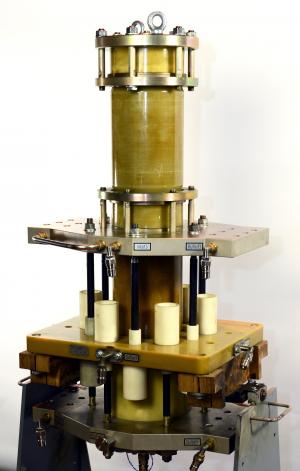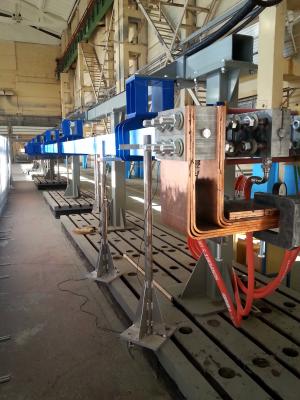Safety authority inspects fast discharge units in Russia
At the Efremov Institute in Saint Petersburg, Russia, work is underway on the final design of the ITER fast discharge units—specialized components that are designed to protect the superconducting coils in the case of a sudden loss of superconductivity (quench).
Among them, the discharge units for ITER's powerful toroidal field coils will have the capacity to extract 41 GJ of stored energy. In the case of a quench, a set of mechanical circuit breakers will isolate the coils from the power supply and deviate the toroidal field current into discharge resistors that will dissipate the energy in about half a minute. With such an important role to play in the safety of the ITER installation, the components are classified as Protection Important Components (class 2) by the French nuclear safety authorities (ASN), a category that is subject to regulation and inspection.
On 24 July, two members of the ASN travelled to Saint Petersburg to perform an inspection of the work underway at the Efremov. The ASN inspectors were accompanied by two technical specialists from the French Institute of Radioprotection and Nuclear Safety (IRSN); representatives from the ITER Organization, the Russian Domestic Agency and the Efremov Institute were also present. It was the first ASN inspection carried out in Russia and also the first one for a component under the responsibility of the ITER Electrical Engineering Division.
Special attention was also paid to the type tests, reliability tests and the qualification of the pirobreaker—the backup circuit breaker that must be available to operate in the case of the failure of the main circuit breaker. The pirobreaker conceived by the Efremov Institute over several years of R&D makes use of explosive charges to interrupt the current. During the inspection, the ASN delegation made a factory visit to examine a prototype.
At the conclusion of the inspection, the experts congratulated the Efremov Institute, the Russian Domestic Agency and the ITER Organization for the work underway on the fast discharge units. In its official inspection letter, ASN noted that, "Other than a few improvements that could be made, the organization implemented by both the operator and the chain of suppliers involved in the Procurement Arrangement was efficient and rigorous."
The work carried out on the fast discharge units at the Efremov falls under the Procurement Arrangement signed in March 2011 between the ITER Organization and the Russian Domestic Agency for the Switching Network, Fast Discharge Units, DC Busbar & Instrumentation.



